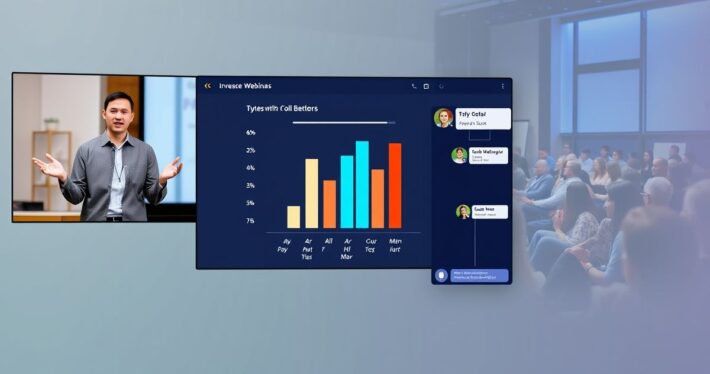Using Humor and Personality to Keep Viewers Interested

Using Humor and Personality to Keep Viewers Interested
In today’s fast-paced digital landscape, capturing and holding your audience’s attention is no small feat. With countless distractions and competing content, how do you ensure your message stands out? The answer lies in one of the most underrated yet powerful tools in your arsenal: humor and personality. Whether you’re creating videos, writing blogs, or hosting webinars, injecting authenticity and wit can transform your content from forgettable to unforgettable. This article explores how humor and personality can keep viewers hooked, offers practical strategies to implement them effectively, and shares real-world examples to inspire your next creation.
Why Humor and Personality Matter
Let’s be honest—nobody wants to consume boring content. Humor and personality are like the secret spices in a recipe. They add flavor, make your content more relatable, and create an emotional connection with your audience. Think about it: when was the last time you remembered a bland, corporate-style presentation? Probably never. But a funny ad, a witty blog post, or a charismatic host? Those stick.
But here’s the catch: humor and personality aren’t just about making people laugh. They’re about showing your human side, building trust, and creating a sense of camaraderie with your audience. When you let your personality shine through, you’re not just a faceless brand; you’re someone they can relate to, trust, and root for.
The Science Behind It
There’s a reason humor works so well in content marketing. According to psychological research, humor triggers the release of dopamine, a neurotransmitter associated with pleasure and reward. When viewers laugh, they associate those positive feelings with your content—and, by extension, your brand. Personality, on the other hand, builds rapport and fosters loyalty. People are naturally drawn to authenticity, and when you show your true self, you create a deeper bond.
Practical Tips for Adding Humor and Personality
Now, here’s where it gets interesting. How do you actually incorporate humor and personality into your content without coming across as forced or cringy? Here are some actionable tips:
-
Know Your Audience
Humor is subjective. What’s hilarious to one person might fall flat for another. Before cracking jokes, understand your audience’s preferences, cultural context, and pain points. A tech-savvy Gen Z audience might appreciate memes and pop culture references, while a corporate crowd might prefer witty anecdotes or dry humor. -
Be Authentic
Forced humor is the quickest way to alienate your audience. Don’t try to be someone you’re not. Instead, lean into your natural personality. Are you sarcastic? Playful? Self-deprecating? Own it. Authenticity resonates far more than a contrived persona. -
Use Storytelling
Stories are a fantastic vehicle for humor and personality. Share personal anecdotes, relatable struggles, or funny mishaps. For example, if you’re hosting a webinar about productivity, you could start with a story about the time you accidentally scheduled a meeting while still in your pajamas. It’s relatable, humanizing, and likely to get a chuckle. -
Incorporate Visual Humor
Visual elements like memes, GIFs, or funny illustrations can amplify your humor and make your content more engaging. Just make sure they align with your brand voice and don’t distract from your message. -
Don’t Overdo It
While humor is powerful, it’s important to strike a balance. Too many jokes can dilute your message or make you seem unprofessional. Use humor strategically to enhance your content, not overshadow it. -
Test and Iterate
Not every attempt at humor will land, and that’s okay. Pay attention to your audience’s reactions and adjust accordingly. A/B testing different approaches can help you refine your comedic style over time.
Real-World Examples
Let’s look at some brands and creators who’ve mastered the art of humor and personality:
-
Wendy’s Twitter Account: Known for its sassy, meme-filled tweets, Wendy’s has turned its Twitter account into a cultural phenomenon. Their witty comebacks and playful tone have earned them millions of followers and countless viral moments.
-
Gary Vaynerchuk: The entrepreneur and motivational speaker uses his larger-than-life personality to captivate audiences. Whether he’s dropping F-bombs or sharing candid advice, his authenticity and humor make him wildly relatable.
-
Old Spice’s “The Man Your Man Could Smell Like” Campaign: This ad series is a masterclass in blending humor with brand messaging. Its absurdity and over-the-top delivery made it one of the most memorable campaigns in advertising history.
Potential Challenges and How to Overcome Them
Of course, using humor and personality isn’t without its challenges. For one, humor can sometimes backfire if it’s misunderstood or deemed inappropriate. To mitigate this, always test your content with a small group before launching it widely.
Additionally, not everyone feels comfortable being the “funny one” in their content. If that’s you, start small. You don’t need to be a stand-up comedian to add personality—just focus on being yourself and sharing your unique perspective.
The Takeaway
Humor and personality are more than just tools; they’re essential ingredients for creating content that resonates with your audience. By injecting wit, authenticity, and relatability into your work, you can transform passive viewers into loyal fans. So, the next time you sit down to create, ask yourself: How can I make this more me? How can I turn a smile into a connection? Because at the end of the day, the best content isn’t just informative—it’s memorable.



